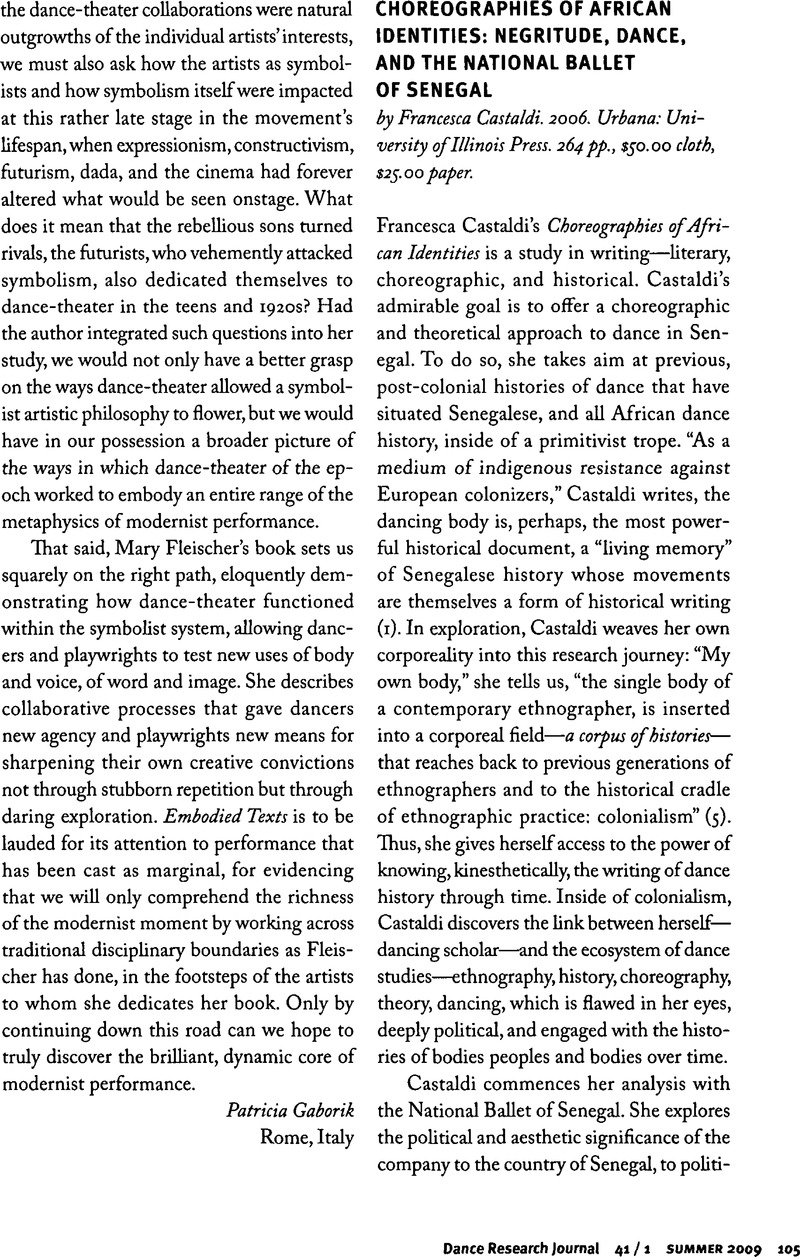No CrossRef data available.
Article contents
Choreographies of African Identities: Negritude, Dance, and the National Ballet of Senegal, by Francesca Castaldi. 2006. Urbana: University of Illinois Press. 264 pp., $50.00 cloth, $25.00 paper.
Published online by Cambridge University Press: 02 April 2012
Abstract

- Type
- Reviews
- Information
- Copyright
- Copyright © Congress on Research in Dance 2009
References
1. We must ask ourselves what, if anythig, we gain from the dance histories of Curt Sachs, Simon Ottenberg, and Esther Dagan. One might consider that the field of dance would be the poorer without them.
2. Négritude, meaning blackness, was a political and artistic movement of the African diaspora. The pan-African, European, and American movement was founded in the 1930s by Leopold Sedar Senghor (1906–2001), who also founded the Senegalese Democratic bloc and would become the first African President of Senegal (1960–1980). The term “Négritude” was first coined by Afro-Martinican poet, and political activist Aimé Césaire (1913–2008) in 1935. The aim of this trans-Atlantic movement, like its geography, was to raise a global consciousness through literary publication and cultural activism surrounding the French word “négre,” meaning black which in English translates into “negro,” and in the Jim Crow South, was nicknamed, disgustingly, “nigger.” Senghor, Césaire's, and Léon Damas's goal, the three forces behind the movement, was to build an international movement that was anti-colonial and anti-racist. Joined by Harlem Renaissance writers Langston Hughes and Countee Cullen, and Richard Wright, the Négritude movement fought against the French occupation of Africa and racist violence in the United States.




